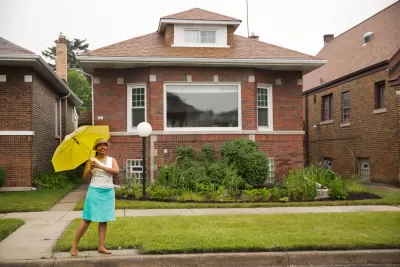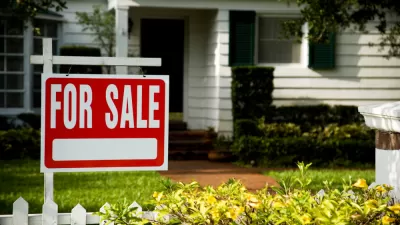Locations with majority black homeownership have plenty to teach about closing the country's home ownership gap.

Tim Henderson surveys the American real estate, which is generally defined by a gap in black homeownership, for examples of communities where black homeownership is the norm.
For example, Henderson begins the article with an anecdote from the city of Olympia Fields, Illinois, where the black homeownership rate is 98 percent, and a dramatic outlier compared to the rest of the country.
Nationally, the black homeownership rate is only 41 percent — virtually unchanged from 50 years ago, when the federal Fair Housing Act banned racial discrimination in housing. The national white homeownership rate is 71 percent. Incredibly, the gap between black and white homeownership rates is wider now than it was in 1900, according to a study released in April by Zillow, an online real estate company.
According to Henderson, there are four other lack-majority municipalities with homeownership rates of at least 80 percent—Flossmoor, Lynwood, Matteson and South Holland—proximate to Chicago and Olympia Fields. "That is no accident: In the 1990s, a group called Diversity, Inc. helped to boost black homeownership in the area by sending black and white buyers to home sellers to ferret out discrimination, and filing lawsuits when they were treated differently," explains Henderson.
The article expands its geographic reach for lessons about the historic causes of the gap in black homeownership and, in perhaps less well documented information, finds seeds for future success in the communities with majority black homeownership.
FULL STORY: Where Black Homeownership Is the Norm

Maui's Vacation Rental Debate Turns Ugly
Verbal attacks, misinformation campaigns and fistfights plague a high-stakes debate to convert thousands of vacation rentals into long-term housing.

Planetizen Federal Action Tracker
A weekly monitor of how Trump’s orders and actions are impacting planners and planning in America.

In Urban Planning, AI Prompting Could be the New Design Thinking
Creativity has long been key to great urban design. What if we see AI as our new creative partner?

King County Supportive Housing Program Offers Hope for Unhoused Residents
The county is taking a ‘Housing First’ approach that prioritizes getting people into housing, then offering wraparound supportive services.

Researchers Use AI to Get Clearer Picture of US Housing
Analysts are using artificial intelligence to supercharge their research by allowing them to comb through data faster. Though these AI tools can be error prone, they save time and housing researchers are optimistic about the future.

Making Shared Micromobility More Inclusive
Cities and shared mobility system operators can do more to include people with disabilities in planning and operations, per a new report.
Urban Design for Planners 1: Software Tools
This six-course series explores essential urban design concepts using open source software and equips planners with the tools they need to participate fully in the urban design process.
Planning for Universal Design
Learn the tools for implementing Universal Design in planning regulations.
planning NEXT
Appalachian Highlands Housing Partners
Mpact (founded as Rail~Volution)
City of Camden Redevelopment Agency
City of Astoria
City of Portland
City of Laramie





























